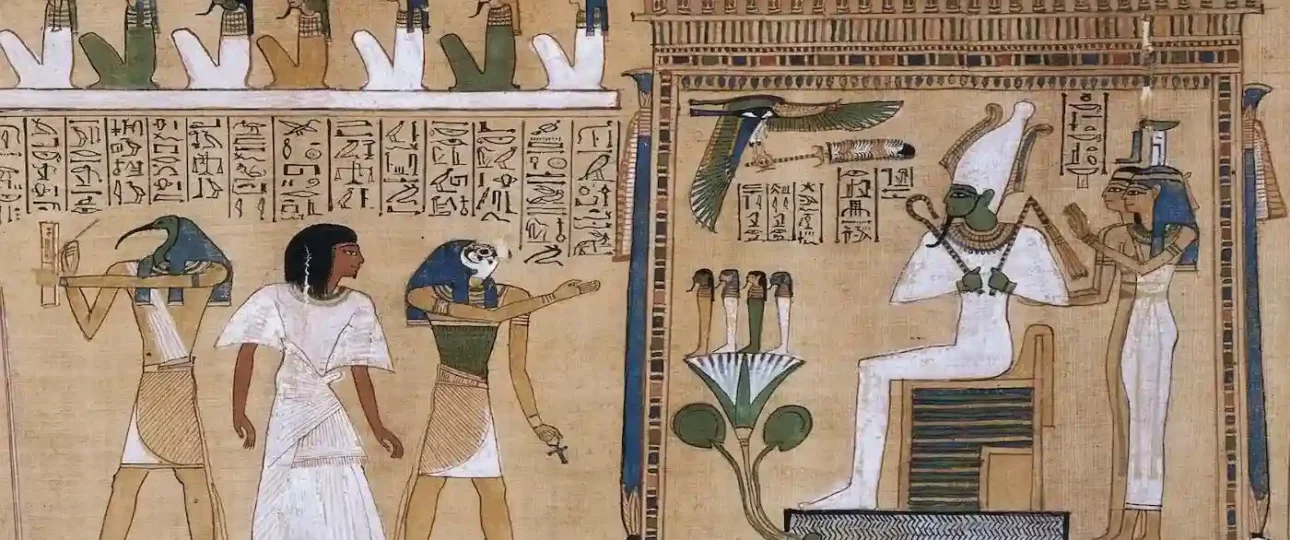The Isis and Osiris Story: Ancient Egypt’s Legendary Tale of Love, Betrayal, and Resurrection
The Myth of Isis and Osiris: A Story of eternal Love, Betrayal, and Resurrection
The Isis and Osiris story is one of the most powerful and lasting Egyptian legends and stories, profoundly mixed with the culture of ancient Egypt. And the modern culture as well. This tale of love, betrayal, death, and rebirth plays till now a central role in the civilization of Egypt and influenced religious beliefs for thousands of years. The legend lasts. Osiris is there. As he represents the guarantee of rebirth for those died. At least as an idea.
THE MOMENT WHEN GOOD AND EVIL BEGAN
Osiris was the god of afterlife, death, and resurrection, while his wife, Isis, was revered as a goddess of magic, healing, and protection. Together, they ruled over the land, bringing peace, prosperity, and knowledge to the people. Osiris was not only a king but also a symbol of life, the fertile BLACK land, and the life-giving waters of the Nile.
However, their harmonious reign was not destined to last. Osiris’s jealous brother, Set, who was associated with chaos and destruction, sought to overthrow him. In an act of treachery, Set tricked Osiris into lying inside an ornate chest, which was then suddenly sealed and thrown into the Nile River. The chest drifted to Byblos, where Osiris remained trapped.
Love is the thing that saves us when in trouble: Isis’s Quest to Revive her husband Osiris
Full of sadnes, Isis went for a journey to find and restore her husband. Her devotion and magical abilities led her to Byblos, where she recovered Osiris’s body. However, Set was not finished—he found Osiris’s remains and scattered them across Egypt. 42 pieces on 42 provinces.
With endless dedication, Isis searched for and gathered Osiris’s body parts. Using powerful magic, she resurrected him, but he could no longer rule the land of the living. Instead, he became ruler of the underworld, presiding over the dead and guiding souls to the afterlife.
Birth of Horus: The Battle good vs. evil goes on
Before Osiris descended to the underworld, Isis conceived their son, Horus. He grew up in secrecy, learning the ways of combat and justice. When he came of age, he confronted Set in a battle that lasted for years. Eventually, the gods intervened, and Horus was declared the rightful ruler of Egypt, restoring balance and order to the world.
Huge Impact of Osiris and Isis on Ancient Egyptian Religion
The Isis and Osiris story became the foundation for many aspects of what is the ancient Egyptian religion called—a complex spiritual belief system that revolved around gods, magic, and the afterlife. Osiris symbolized resurrection and eternal life, shaping the Egyptian concept of death and burial rituals. The grand Temple of Abydos, believed to be Osiris’s sacred resting place, was one of the most significant pilgrimage sites in the culture of ancient Egypt.
The story also influenced Egyptian funerary practices, inspiring the so-called Book of the Dead, a collection of spells and texts designed to guide souls safely through the underworld. Egyptians believed that if they lived a righteous life, they would be welcomed by Osiris into the afterlife.
The Lasting Legacy of Isis and Osiris
Although the rise of Christianity led to the decline of Osiris’s worship, his mythology and religious significance never fully disappeared. His story continued to inspire art, literature, and religious thought, even influencing the later Egyptian legends and stories of Greco-Roman times.
The Isis and Osiris story remains one of the most compelling tales from ancient civilization Egypt, representing themes of devotion, justice, and renewal that continue to captivate people today. Their legacy is not just in temples and tombs but also in the beliefs and cultural heritage that have endured for thousands of years.

